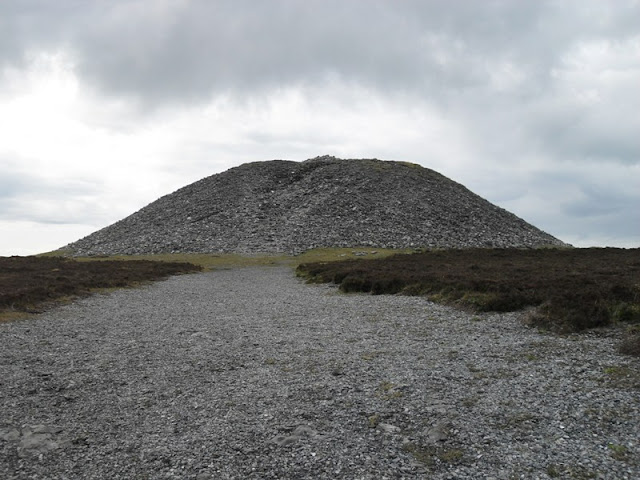Ireland's Queen Maeve
 |
| Queen Maeve's Tomb |
She is a woman symbolic of women’s strength and sexuality. Her everlasting legacy rests on the landscape through the place names referenced to her from different battles and scenes. She will forever remain immortal over her Kingdom of Connaught where she once reigned supreme.
But who was Queen Maeve or Medb? Was she a legendary or historical figure? The Ulster Cycle one of the four great cycles of early Irish literary mythology details Maeve as the Queen of Connaught, who embodies the power of women, sexuality and carnal desire. She was a woman who commanded armies and had numerous husbands and lovers including many of her army officers to keep them loyal. Men who performed well in battle were offered sexual favours. This may have been a form of encouragement and motivation. Upon gazing at her men would fall in lustful desire.
Her father, Eochaid Feidlech, High King of Ireland, married her to Conchobar mac Nessa, King of Ulster, with whom she had a son named Glaisne. However, this marriage was short lived. Maeve’s father Eochaid gave another of his daughters, Eithne, to Conchobar after the marriage ended with Maeve. Unhappy with this, Maeve had her sister killed however her sister was pregnant, but the child named Furbaide, survived. Maeve was placed on the throne in the Kingdom of Connaught by her father after King Tinni mac Conri was removed from power.
 |
| Queen Maeve's Statue |
Her husband in the Ulster cycles was Ailill mac Máta, King of Connaught. This leads to the great “Cattle Raid of Cooley” to steal Ulster’s prize stud bull. This story is written in the book “The Táin”, a delightful tale, telling the story of when Maeve discovers that her husband Ailill was one stud bull richer than she was. She learned that her former husband Conchobar had such a bull which would rival that of her husband’s and she sent messengers to Ulster to meet with Dáire mac Fiachna holder of the bull. She offered land, wealth and sexual favours in return for the bull. Her conditions were not met and Maeve went to war. The book is a great read and follows the battle that Maeve eventually wins between the armies of the west and the north and the many encounters she had with the legendary Ulster hero, Cúchulainn.
In her later years she was killed while bathing in a pool on an island in Lough Ree (second largest lake on the River Shannon) by her nephew Furbaide who had wanted revenge for the murder of his mother Eithne. Queen Maeve was succeeded to the throne of Connaught by her son Maine Athramail.
Today, resting high on the summit of Knocknarea, in the north west of Ireland in County Sligo is believed to lay the body of Queen Maeve in an unopened 5,000 year old cairn. This is a large cairn measuring 180 ft wide and 40 ft high with an estimated weight of 27,000 tonnes. It is believed the cairn contains a Neolithic passage tomb and it is surrounded by many smaller passage tombs which are aligned to face Carrowmore. Carrowmore lies east of Knocknarea and is an ancient megalithic stone cemetery containing over sixty five portal/dolmen monuments. Among these are portal tombs dating to 4,600 B.C. Queen Maeve is said to be buried upright in the large cairn, dressed in her warrior armour, facing her enemies to the north in Ulster. The cairn is known today as Maeve’s Cairn, Maeve’s tomb, Maeve’s nipple or Maeve’s grave. It can be seen resting on the summit for many miles around County Sligo – a sight which cannot be missed unless it is shrouded in a veil mist.
It is also possible that Maeve is a representation of the Goddess Maeve of whom the newly elected High King of Ireland had to ritually marry during his inauguration on the Hill of Tara.
Whether she is a mythical or historical figure and is still standing tall facing her enemies of the north in a huge unopened cairn we may never know however she has over time become a woman symbolic of women’s strength and sexuality. Her tales of battles show at times a scornful woman, stubborn and revengeful. There is an everlasting legacy left by her on the landscape of Ireland and she will forever remain immortal over her Kingdom of Connaught where she once reigned supreme.
 |
| Queen Maeve's Cairn |



Comments
Post a Comment